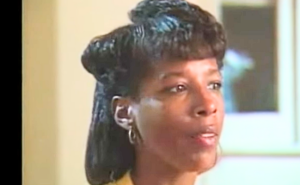In 1990, Ravendale, a neighborhood located on Detroit’s East Side, was battling significant challenges, primarily stemming from poverty, unemployment, and a pervasive drug epidemic. This area, home to approximately 4,100 residents, including 1,300 children, had seen better days but was now characterized by abandoned houses, crime, and a sense of despair. Despite these hardships, the community’s spirit was not completely broken, and efforts were underway to reclaim and rebuild the neighborhood through collective action and determination.

The Impact of Drugs and Crime
Ravendale, once a thriving working-class community, had deteriorated significantly by the late 1980s. The neighborhood’s decline was exacerbated by the infiltration of crack cocaine, which turned many of its homes into crack houses. Over 70 drug houses operated within Ravendale’s 38 blocks, most of which were rental properties owned by absentee landlords. These landlords often turned a blind eye to the illegal activities taking place on their properties, contributing to the neighborhood’s decline.
The presence of these drug houses had a devastating effect on the community. Many residents, particularly single mothers on welfare, were coerced into allowing dealers to use their homes in exchange for money or drugs. This not only endangered their lives but also jeopardized the safety and well-being of their children. The rampant drug trade created an atmosphere of fear, with residents too scared to leave their homes at night and children growing up in an environment rife with crime and violence.
Community Organizing and the Role of Block Clubs
In response to the rising crime and drug-related issues, Ravendale residents began organizing themselves into block clubs. These clubs became the backbone of the community’s resistance against the drug trade and the deterioration of their neighborhood. One of the most successful examples of this grassroots organizing was the block club led by Tony Melwayne. Under her leadership, the block club on Wade Street managed to pressure landlords into evicting tenants involved in drug activities and replacing them with responsible renters who contributed positively to the community.
These block clubs did more than just combat crime; they fostered a sense of unity and pride among residents. Monthly meetings were held to discuss strategies for improving the neighborhood, and the collective efforts of the residents began to yield tangible results. Crime rates dropped, and the number of crack houses in the area was significantly reduced. The block clubs also worked on beautification projects, such as cleaning alleys and installing streetlights, which further bolstered community morale.
Support from External Organizations
As the block clubs gained momentum, their efforts caught the attention of external organizations and government agencies. Suburban churches and private companies began to collaborate with the residents, providing resources and manpower to help renovate abandoned homes and improve living conditions. One notable initiative was the “Adopt-a-Block” program, where suburban churches partnered with block clubs to repair homes and build bridges between different communities.
The city of Detroit also stepped in, demolishing many of the vacant houses that had become crack dens. These efforts not only improved the physical appearance of the neighborhood but also instilled a renewed sense of hope among the residents.
Individual Stories of Struggle and Redemption
The documentary highlighted several personal stories that illustrated the harsh realities of life in Ravendale and the resilience of its residents. Pat Herling, a single mother of five, had fallen into crack addiction and lost custody of her children. However, she managed to turn her life around with the help of community leaders like Eddie Edwards, who ran a local community center called Joy of Jesus. Pat regained custody of her children and moved into a renovated home, although the shadow of the drug trade continued to loom over her as a crack house operated just across the alley.
Similarly, the Epting brothers, Robert and Dwayne, who once controlled several major crack houses in the neighborhood, decided to leave the drug trade behind. Their story highlighted the devastating impact of drugs on individuals and the community, but also the possibility of redemption and change.
The Spirit of Ravendale
Despite the numerous challenges, the residents of Ravendale remained determined to reclaim their neighborhood. The documentary emphasized the importance of community action, faith, and the belief that change was possible. Reverend Eddie Edwards, the architect of the Ravendale Project, played a crucial role in mobilizing the community and providing a safe space for children through the Joy of Jesus community center. His vision extended beyond just saving Ravendale; he saw it as a model that could inspire other communities facing similar challenges.
In the end, the story of Ravendale is one of struggle, resilience, and hope. The efforts of the block clubs, supported by external organizations and driven by the indomitable spirit of the residents, demonstrate that even in the face of overwhelming adversity, a community can come together to create meaningful change.



